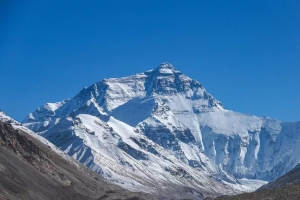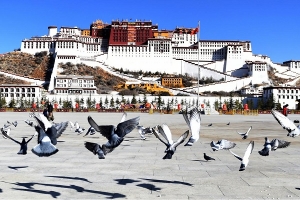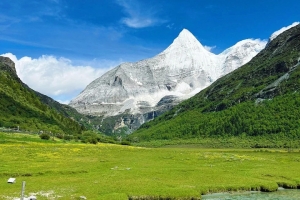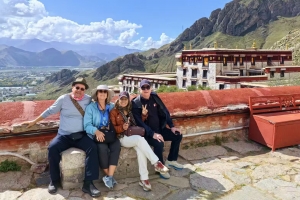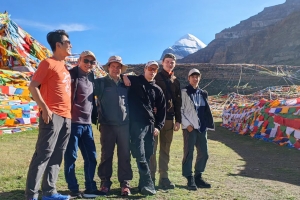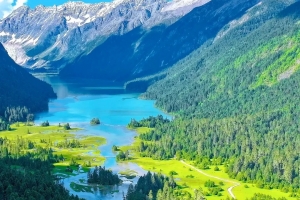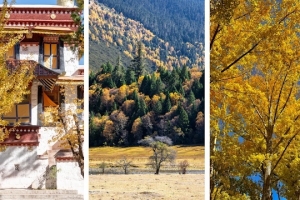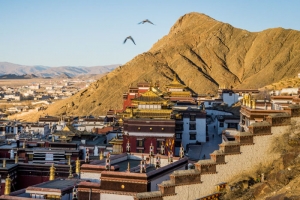Tibet, often called the “Roof of the World,” is a destination that promises awe-inspiring landscapes, a rich cultural history, and a unique spiritual atmosphere. For Singaporeans planning to embark on an adventure to this mystical region, there is much to consider beyond the sheer beauty of the Tibetan Plateau. While Tibet offers a once-in-a-lifetime experience, it also comes with certain safety challenges, particularly due to its high altitude, political sensitivities, and unique travel regulations. This guide explores the essential safety concerns to keep in mind while preparing for your journey to this remote and ethereal land.
Preparing for the Thin Air
One of the most significant safety concerns when travelling to Tibet is the altitude. With Lhasa sitting at 3,650 meters above sea level, and other parts of the region reaching even higher elevations, altitude sickness is a common affliction for visitors. For Singaporeans, who live at sea level, the thin air can be particularly difficult to adjust to. Symptoms of altitude sickness include headaches, dizziness, nausea, and fatigue. To avoid these, it’s essential to take acclimatisation seriously. Upon arrival in Tibet, it’s advisable to spend a couple of days in Lhasa before heading to higher altitudes to give your body time to adjust. Drink plenty of water, avoid alcohol, and refrain from any strenuous physical activity during the initial days. If you begin to feel any symptoms of altitude sickness, it’s important to rest, hydrate, and seek medical attention if necessary. Carrying medication such as Diamox, which can help in the prevention and treatment of altitude sickness, is also recommended.

Understanding the Paperwork
Another vital safety consideration is Tibet’s strict travel regulations. While Singaporeans don’t require a visa for mainland China, entering Tibet requires a separate Tibet Travel Permit. This permit can only be obtained through a licensed tour operator and must be arranged in advance. Independent travel is not allowed in Tibet, and visitors are required to travel with a government-approved guide. This regulation may feel restrictive to those used to travelling freely, but it’s designed to ensure safety and manage the flow of tourists in such a delicate and remote region. The travel permit is required to visit even the most famous sites, such as Lhasa and Mount Everest Base Camp, so it’s important to factor this into your trip planning. Your licensed tour operator will assist with obtaining the necessary permits, ensuring that you don’t encounter any legal issues upon arrival.
Medical Resources and Precautions
Health and medical facilities in Tibet are also a point to consider. Although major cities like Lhasa have hospitals and medical services, the remote areas of Tibet may not have access to well-equipped healthcare facilities. It’s wise to travel with a basic first-aid kit, including medications for common ailments such as colds, headaches, and digestive issues. Additionally, it’s important to check whether your health insurance covers travel to Tibet, particularly for medical evacuation in the event of a serious illness or injury. Since the region is sparsely populated and medical resources can be limited, it’s always better to be over-prepared than to risk being unprepared.

Adapting to the Environment
Weather conditions in Tibet can also pose challenges, particularly if you’re not accustomed to the harsh conditions. Even during the warmer months, temperatures can fluctuate dramatically, and the high-altitude sun can be harsh. Sunburn is a common issue for those unprepared for the intensity of the UV rays at such elevations. It’s essential to carry and apply high SPF sunscreen regularly, wear sunglasses, and cover exposed skin to protect yourself from sun damage. Additionally, weather in Tibet can change quickly, especially in more remote areas. Be prepared for the possibility of snow, heavy winds, and rain—even during the summer months. Layered clothing is critical for staying warm, as the temperatures can drop sharply at night, even if it was warm during the day. Bringing sturdy footwear is also important, as many parts of Tibet, especially around monasteries and trekking areas, have uneven, rocky terrain that can be difficult to navigate.
Respecting Local Norms
The political situation in Tibet remains a sensitive issue, and visitors should be mindful of the region’s complex history and the ongoing tensions between Tibet and China. While Tibetans are generally welcoming and friendly, discussions about the political status of the region or the Dalai Lama can be viewed as highly sensitive. To avoid any potential conflict or discomfort, it’s advisable to steer clear of discussing these topics during your travels. Respecting the cultural and political landscape will ensure a positive experience with the locals and avoid drawing unwanted attention.

Navigating the Landscape
Despite its remoteness, Tibet is a relatively safe destination in terms of physical safety. Crime rates are low, and violent crime is extremely rare. However, there are some practical safety considerations to keep in mind. Many parts of Tibet, especially more isolated areas, are not equipped with modern amenities. Roads can be treacherous, particularly in winter or during rainy seasons, and landslides are a common hazard in the mountainous terrain. When travelling between cities or to more remote locations, ensure that you are well-prepared with provisions, including extra water, snacks, and a means of communication. It’s also advisable to inform someone of your travel itinerary, especially if you plan to visit less-touristed regions.
Staying Safe in the Wilderness
Lastly, wildlife and the natural environment pose potential safety concerns. Tibet is home to a variety of wildlife, including yak herds, wild animals, and even the occasional snow leopard. While these creatures are generally not a threat to humans, it’s important to keep a safe distance, particularly if you are trekking in more remote areas. Additionally, the environment can be challenging due to the thin air and rugged terrain, which may lead to fatigue more quickly than you might expect. Always listen to your guide’s instructions and stay within safe parameters when exploring the wilderness.
While Tibet offers a truly unique and awe-inspiring experience, it requires careful preparation, particularly with regard to health, safety, and cultural sensitivity. Singaporeans travelling to Tibet should take steps to acclimatise to the high altitude, ensure they have the correct permits and paperwork, and be mindful of the region’s political and social complexities. By being well-prepared, respectful, and cautious, your trip to Tibet will not only be safe but will also allow you to fully appreciate the mystical beauty and profound spirituality of this extraordinary destination.

